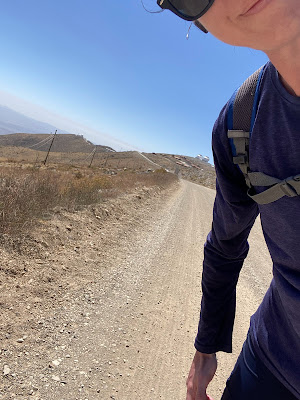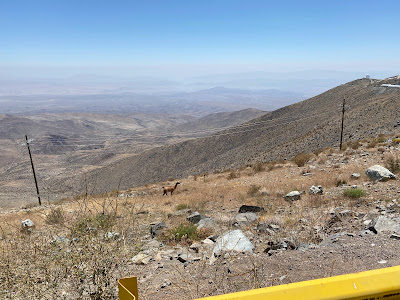Hello blogosphere! Long time no see. This past week I've been back at Las Campanas, observing with Magellan II/PFS for the first time in person in almost exactly three years (my last time here was early February 2020). Getting to reconnect with the staff, being "in the room where it happens", and experiencing truly dark skies has been wonderful, reminding me of all the reasons I love and am so lucky to have my job. A lot has changed in the past three years, including around the observatory, but the excitement of discovery and dedicated support from the staff remain super strong.
In this first PFS run of 2023A, I'm observing with Sam Yee, a graduate student at Princeton and a frequent remote observer with PFS. This is Sam's first time at LCO, though, so it's been delightful showing him around and seeing him experience things for the first time. Per usual, our observing program has been a mix of potential planet host stars -- we're trying to detect new planets -- and stars that host transiting planets -- we're trying to measure their masses and/or refine their orbital properties. We also had two long, continuous observations of transiting planets exactly as they cross the face of their host star, which can be used to determine the spin-orbit alignment of the planets vs. their stars. This type of observation helps us infer the dynamical history of the planet, e.g., whether it is at its current very short orbital position due to smooth migration through a disk of gas or a more chaotic process like interaction with other sibling planets. We've also been pushing the instrument a bit in terms of capabilities to measure RVs of faint stars (for us this means V magnitudes of <~13). For my own program, I'm collecting data on known transiting planets, including several that we'll be observing this year with JWST to measure their atmospheric compositions. I'm excited to see the different results from this run!
I'm training for a March marathon so tried to get in some running on the mountain while I was here. The altitude and hills make for a fun/frustrating challenge! Below I include some run photos, as well as snaps of various wildlife on the mountain. If you're a fan of flora and fauna, you can check out the LCO iNaturalist page and try to help us identify the mystery VERY LARGE arachnid we saw a few days ago!
I very much look forward to more in person observing later this year. Remote is very convenient and has other pros like a lower carbon footprint, so it's great to have and use that option. But observing in person makes a difference both science-wise and happy-astronomer-wise, so I'm grateful to be back!








